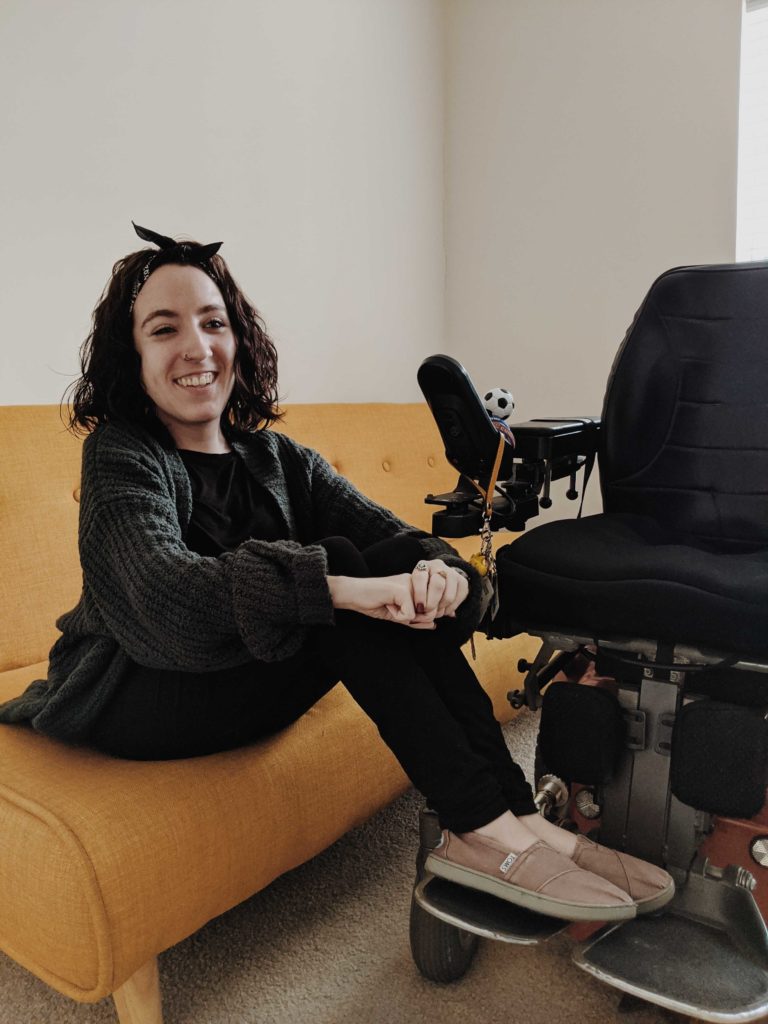
Hello! It’s Katlyn’s personal assistant, Nikki, here! Katlyn is letting me take over the blog today to introduce a topic important to both of us.
Today is Rare Disease Day! Why does that matter? I have a rare disease called SMA, and I am writing this blog to tell a little about it. SMA stands for Spinal Muscular Atrophy. It’s a neuromuscular disease that affects basically what it says – muscles. There’s a lot of sciencey stuff behind it, but in a nutshell, it causes muscles to gradually become weaker over time.
SMA affects about 1 in 10,000 people, which is actually more common than a lot of other rare diseases. Still, you don’t see many people with SMA running around often (literally though, because we can’t run LOL).
I want to talk about some common things people don’t normally think about when they see people with obvious physical disabilities. SMA is usually obvious; I’m in a wheelchair. It’s pretty noticeable.
Accessibility
Have you ever gone to a new building, let’s say a cafe that you found on Google and really wanted to try, and you get to the building to realize you can’t get inside? No? It’s not pretty common, but this is something that happens to me regularly. Many public buildings are not designed for wheelchair users, especially in downtown areas (for my local folks, Norfolk hates me).
Just because a building says it’s “wheelchair accessible” does not always mean it is actually wheelchair accessible. The building could have a ramp, but maybe there’s a small step at the top of the ramp at the door. Maybe a wheelchair can get inside the building, but the bathroom stalls can’t fit a wheelchair inside. Perhaps the elevator is always broken when someone needs to get upstairs. Wheelchair accessible should mean that a wheelchair user is able to access the main parts of a building (upstairs, downstairs, bathroom, entrance etc.).
Parking
I drive, surprisingly, yes people in wheelchairs can drive! The only main issue is there are very limited accessible parking spaces for wheelchair drivers. I need the blue spaces with the hash marks (diagonal stripes) in order to let my ramp out and get out of my van. Unfortunately, I run into people parked illegally in these spaces on almost a weekly basis (yes I said weekly). This prevents me from being independent, and I am often late to where I need to go or can’t get into my van.
Work
I have personally experienced that people don’t typically like to hire disabled people. I applied to almost 100 jobs (yes, literally, I made an Excel spreadsheet to keep track) after graduating college from May – August, and I had maybe 6 interviews. I wasn’t even able to participate in two of the interviews because they weren’t accessible.
The workplace isn’t designed for people in wheelchairs or people with neuromuscular diseases. I can’t tell you how many times I read a job description that I thought I fit well, but once I scrolled to the bottom, there was a requirement to lift 50+ pounds… for a desk job. There aren’t a ton of entry level jobs on the market with zero manual, physical labor. This is unfortunate because people with disabilities have comparable skills to bring to the table, yet they are often disqualified due to physical requirements.
This is one reason why I love being a part of KIBB. Katlyn offered me a job not because she felt bad for me but because she knew that I needed a job and she needed help! She’s super tough and dedicated, but running a small business solo is overwhelming to say the least. I had most of the skills she needed in a personal assistant, and she offered a work environment that was perfect for me. I can make my own schedule, and I don’t have to fight for accessibility and inclusion; I only need a computer and the ability to learn how to do new things that running a small business involves.
I hope this gives a little bit of insight into what life and work with a rare disease looks like. Everyone’s experience with SMA is unique, and I am grateful that I got to share mine with you.
xoxo,
Nikki